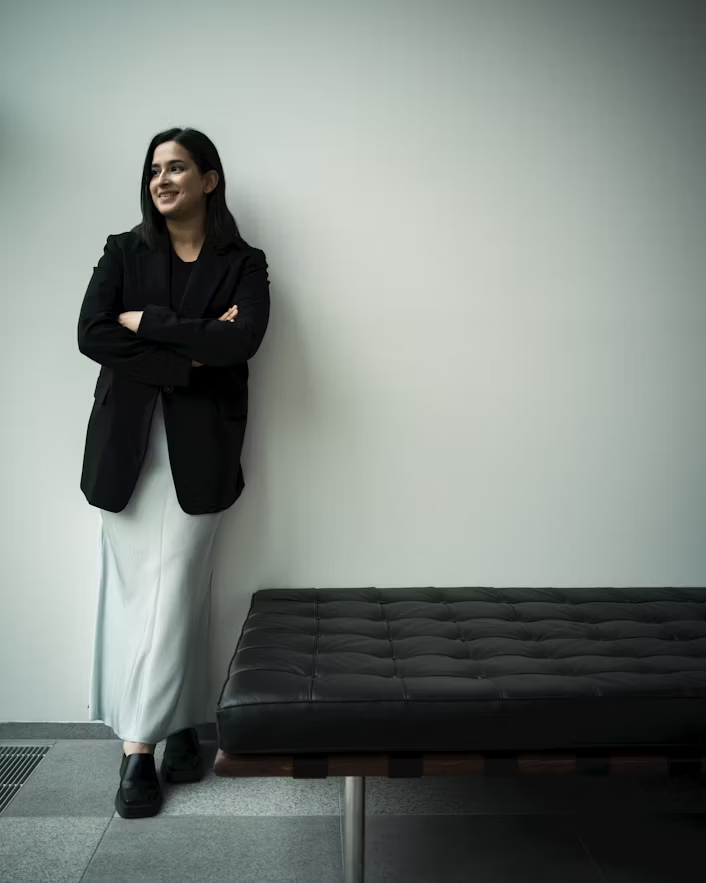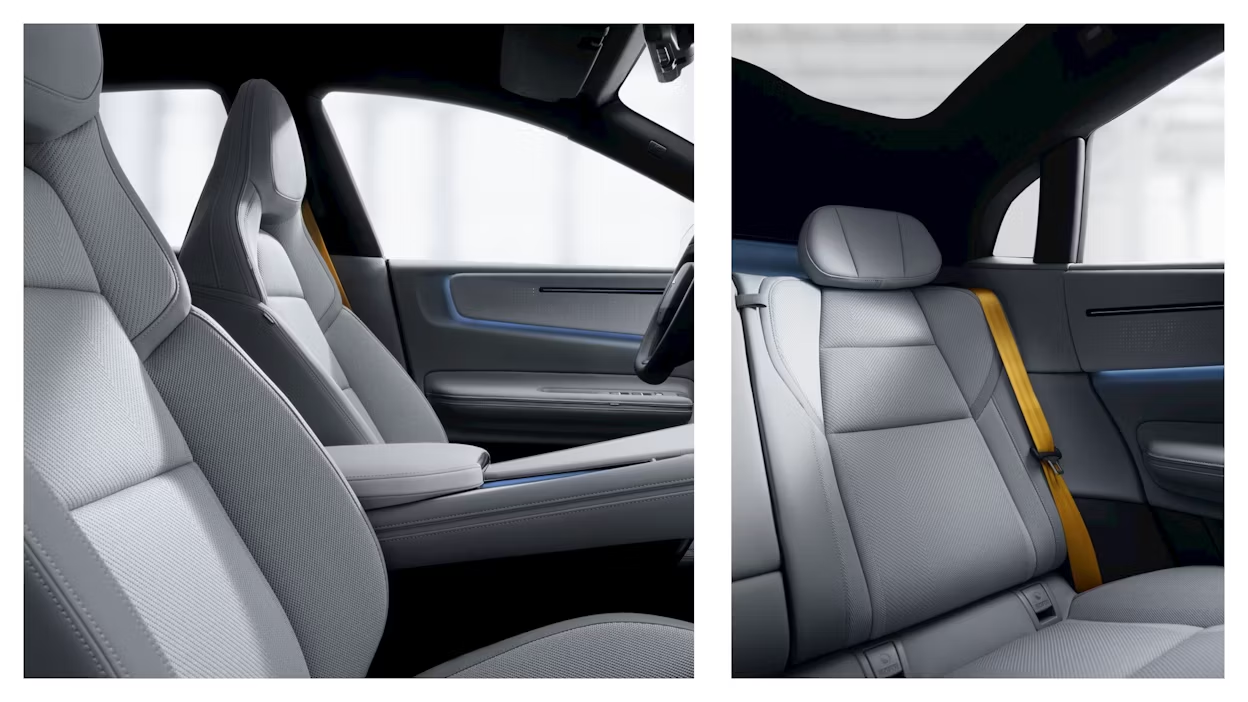CMF Designer Komal Singh’s: Path to Polestar
Electricity may drive our cars, but passion powers our brand. No passion? No Polestar. For Komal Singh? No problem. Our CMF (Colour, Material, and Finishes) Designer has ardour in abundance — a type of passion that’s taken her on a unique journey, eventually leading her here. This is Komal’s path to Polestar.
Komal Singh’s journey starts in Lucknow, India, where she was born and raised. Lucknow is one of the cultural centres in India, known for its poetry, music, and great food. Similar to a design colleague of hers, Komal’s name has a contrasting meaning. In Hindi, the name Komal means soft or gentle, while her last name – Singh – means lion. While contradictory, contrasts can breed the most interesting of outcomes and are themes present both in Indian culture and her life.
From Lucknow to Gothenburg – through the influences of Indian and Japanese culture, and the embrace of traditional craftmanship, resourcefulness, and sustainable practices – Komal’s journey has been guided by intent and purpose. And the occasional coincidence.


As a kid, I would just read, and read, and read.
Growing up in India
Growing up in India was a formative experience. “It’s a world filled with contrasts,” she enthuses, with a bubbling city life exposing its citizens to a colourful explosion of different foods, people, cultures, and experiences on a daily basis. While there is, of course, also a more tranquil side of Indian culture, in which mindfulness, meditation and simplicity are key features.
In this generally fast-paced environment, Komal's friends and family would likely find her in one of two situations: either head-first in the middle of an action-filled activity or fully consumed by the world of books. During her middle and high school years, Komal was enlisted in about every extracurricular activity you can think of, ranging from classical dance and theatre practice to basketball and competitive speed skating.
Contrastingly, she was also a voracious reader. Anytime she had a spare minute between school, friends, family time, and extracurriculars, she’d disappear into the world of words. “I think that it was like my escape,” she comments. “As a kid, I would just read, and read, and read. I also started to write at a young age, and so from then on, I’d write, and read, and write, and read. It was my thing.”
Influences from home
In a sense, parents are the original influencers. From a young age, the actions and words of our parents influence our experiences, beliefs, and behaviours. And at best, parents can even inspire. For as long as Komal can remember, her mother has been contagiously creative, always keeping busy with different crafts and projects.
When Komal was ten years old, she was introduced to the world of repurposing. Her school had organised a competition, inviting pupils to create something new from everyday waste. Approaching the task, her mother asked her, “What is it that hurts your eye? What do you want to pick up and put to use?” Together, Komal and her mother came up with the idea for Komal’s first-ever upcycled design: a vase of discarded plastics.
“For a kid it's about picking something that has absolutely zero value and turning it into something valuable. And that's essentially what upcycling is,” says Komal. This would not be the last time she explored the issue of sustainability. That mindset stuck and has only expanded since.


When you work with those traditional practises, and work with craftsman and artisans, you learn to respect resources, and you really learn that they have such a refined process of creating
Craftsmanship and traditional techniques
Ever since she was introduced to a resourceful way of living, Komal has been drawn to the exploration of sustainable practices and traditional techniques of creating materials. During her university studies at the National Institute of Design, Komal would delve into all types of textile making techniques. The university’s learning-by-doing approach meant that knitting, weaving, and printing techniques constituted a large part of the curriculum.
India has a long and rich tradition of textile making, so field trips were also an important part of the learning curve. The class was encouraged to travel to different parts of India to visit artisans who practised centuries-old techniques and crafts. Each region would introduce Komal and her classmates to a different set of techniques and traditions of material making.
As she lived with and learned from these different artisans, she noticed a common thread. They all shared a respect for the world’s finite resources, making sure the materials they created were produced purposefully. “When you work with those traditional practises, and work with craftsman and artisans, you learn to respect resources, and you really learn that they have such a refined process of creating,” Komal remembers. “We say that waste is a design flaw, but you really learn it when you work at the ground level with artisans.”
During her design studies, Komal had the opportunity to explore the craftsmanship traditions of Japan. Similar to her travels in India, Komal learned from artisans who had practised their traditional crafts for decades. Some of these crafts were on the verge of going extinct due to so few practising them.
Her travels were humbling experiences, she tells us. Many of the insights she gained from these experiences she carries with her still. “Even if what I do now is, on paper, very far removed from that, it's not so different because we're still working with sustainability, and we're still talking about treating resources well... treating the material well, making sure that it comes from the right places. So, this is kind of the day-to-day dialogue that I still have on my job.”

Moving to Sweden
Komal’s bachelor’s degree in textile design prepared her for work in industries ranging from fashion to home textiles and everything in between, and like many of her classmates, Komal’s career started in the clothing industry.
She quickly realised, however, that the fashion world wasn’t for her (although she does still find aspects of the industry inspiring). The constant production cycles, ever-changing trends, and seasonal collection changes did not fit with the idea of respecting resources and materials that she had just spent years learning about. Neither did it give her the space or time to exercise her creativity.
Komal was longing to experiment and innovate with materials. Enter: the automotive industry. With no prior plans or dreams of working with vehicles, Komal just happened upon an opportunity to work with cars, more specifically, working with developing materials and exploring colours. She applied for the position and before long found herself in Sweden.

Working at Polestar
Seven years later, Komal still lives and works in Scandinavia’s largest country. She enjoys being surrounded by Scandi design, which, as it turns out, is not that different from Indian aesthetics. In fact, Komal constantly finds herself drawing parallels between the visual identities of the two countries.
“Contrary to popular belief, India traditionally has not been a very maximalist society. There's also a very simplistic India, and a very simple way of life in India. So, now that I live in Scandinavia and I'm surrounded by all these great examples of Scandinavian design, I constantly draw these parallels with India and the visual culture back in India. And how beautiful and minimal it can be back home as well,” says Komal.
Komal’s work at Polestar involves finding new, innovative, and sustainable material solutions for all our car models’ interiors, which isn’t very different from the practices she learned in India growing up. “When I think of it, what I did in that waste competition back as a 10-year-old, there are many similarities to what I do now in terms of finding new raw material waste that needs to be put into a new application, working with a variety of sources of materials and trying to create a new premium expression from it.”
Together with the CMF team at Polestar Komal has created unique colour and material expressions for our full model line-up, including Polestar 2, Polestar 4, Polestar Precept, and the upcoming Polestar 5. Some of her most recent projects include the new soft tech expression, available for Polestar 4.
Read all about the CMF teams work with Polestar 4 here.







